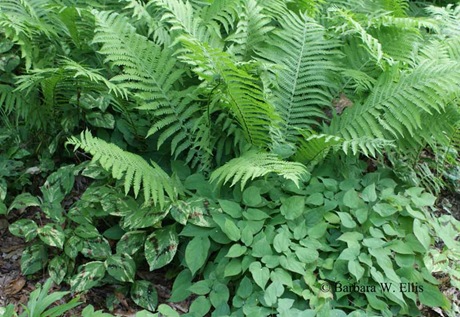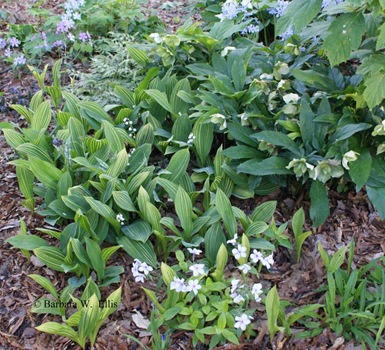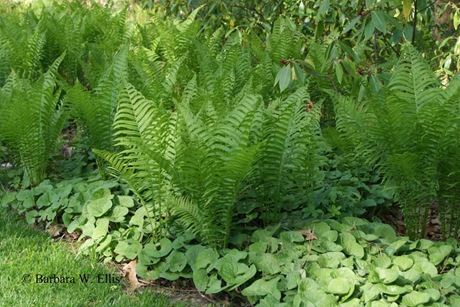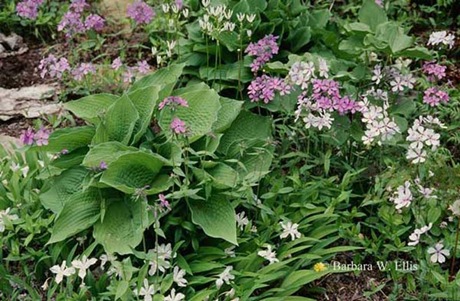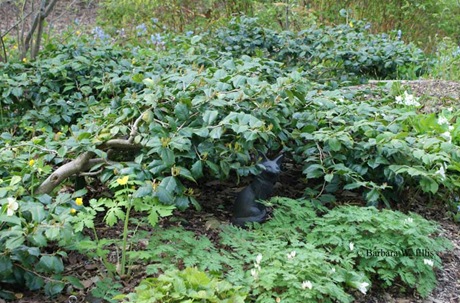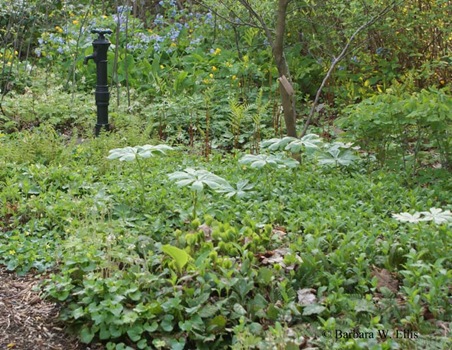 Covering ground has long been a gardening obsession of mine. By that, I mean covering ground with something other than lawn. Every year, we have less grass than the year before, although the lawn I maintain for my dogs is safe. They couldn’t survive without essential sections for throwing Frisbees and tennis balls.
Covering ground has long been a gardening obsession of mine. By that, I mean covering ground with something other than lawn. Every year, we have less grass than the year before, although the lawn I maintain for my dogs is safe. They couldn’t survive without essential sections for throwing Frisbees and tennis balls.
In my garden, lawn gets replaced for a variety of reasons. Maintenance and mowing are certainly right up there at the top of the list, but so is the fact that I’m always looking for room for just a few more plants. I don’t have separate areas devoted to flower gardens and ground covers, though. That’s because I think a great many traditional flower garden residents make great ground covers. Fill a flower bed with mound-shaped plants, space them close together, and you’ve got ground covers. For example, a garden planted with a jumble of mounding lavenders, golden oregano, and thymes—with daylilies, hardy geraniums, and mounding sedums thrown in for good measure—not only looks great, but there isn’t room for many weeds, either.
As the author of Covering Ground, a book on ground covers, I’m often asked for my short list of favorites. Usually the asker wants one plant for a specific site. The truth is I never have just one, because my favorite way to use ground covers is in combination. Yes, this helps satisfy my “so many plants, so little time” obsession, but I also think it’s just better gardening. For one thing, our search for the one plant that will cover a site completely has led to our dependence on non-native invasives like English ivy and vinca. Anything that can blanket a site so densely weeds can’t grow is more than likely a thug that shouldn’t be in the garden in the first place. Plus, the problem with garden thugs starts once they have filled the site you have assigned them. What are they supposed to do then, stop growing?
Combinations have the added advantages of more interesting texture and longer bloom, too. For this reason, I wanted to share just a few favorite ground cover combinations. All employ plants that are vigorous enough to cover but polite enough to allow room for other garden residents.
While lovely from spring to fall, this trio illustrates one important rule to follow when combining ground covers: Match plants carefully, especially their vigor and growth rate. Any one of the plants in this trio—Ostrich ferns (Matteuccia struthiopteris), Epimedium × rubrum, and Persicaria virginiana ‘Painter’s Palette’—would quickly swamp more delicate bed companions. Together, though, they’re equally vigorous, coexist nicely, and cover ground very effectively. That’s not to say I won’t have to mediate their relationship from time to time with a spade. Fortunately, digging and sharing plants is far more fun than weeding the spaces between ground covers that aren’t covering ground as thickly as I’d like.
When planted alone, hellebores (Helleborus × hybridus) make a grand ground cover, but I love them even more planted in combination. This partially shaded spot in my front garden includes variegated lily-of-the-valley (Convallaria majalis ‘Striata’) and a touch of wild blue phlox (Phlox divaricata). The resulting combination features flowers and interesting foliage for months on end.
Ostrich ferns (M. struthiopteris) underplanted with wild ginger (Asarum canadense) make a simple, yet handsome, combination for a wild garden. Lovely contrast, both texture and form, makes this pair surprisingly interesting. Not only do the lacy-textured fern fronds contrast with the round- to heart-shaped wild ginger leaves, I also love the exuberant look of the tall ferns springing from the dense, solid carpet of wild ginger. This shot was taken at Mt. Cuba, a garden in Hockessin, Delaware, that you should move heaven and earth to visit if you are interested in native East Coast wildflowers.
Everyone knows that hostas make fine ground covers, but they’re even better grown in combination with other plants. I especially like surrounding them with spring-blooming natives, since it adds months of color to the combination. This planting features hosta ‘Inniswood’, whose leaves color up as the season progresses with white crested iris (Iris cristata f. alba), a native species that makes a nice shade ground cover. Wild blue phlox (P. divaricata) in several colors decorate the planting. This beautiful shade-loving native blooms for weeks in mid to late spring. Several color forms are available, and if you get your hands on a few of them, they’ll cross and seedlings will pop up throughout your woodland in a variety of colors. The flowers are fragrant and nice for bouquets, too.
I suppose this isn’t a combination as much as it is a ground-covering shrub decorated with spring wildflowers, but what a shrub it is! I’ve had ‘Maryland Dwarf’ holly (Ilex opaca ‘Maryland Dwarf’) growing in my own garden for a few years, but had never seen a mature specimen like this one until I visited Mt. Cuba. Plants reach 3 feet in height, although this one was somewhat shorter, and spread to 10 feet. Obviously, it’s a stunning ground cover. With my own plants I have had a little bit of problem with branches splitting at narrow crotch angles breaking due to heavy snow cover, but the plants recovered well.
In this woodland floor at Mt. Cuba drifts of emerging Allegheny spurge (Pachysandra procumbens), foam flowers (Tiarella spp.), violets, and ferns all jockey for space, while mayapples (Podophyllum peltatum) float above the fray. Together, they form a ground cover as thick as any gardener could want. All the plants are about equally vigorous, so they’re well matched bed companions. It’s a classic combination that signifies one of the best parts of making ground cover combinations, and that is the unending array of possible combinations—enough to satisfy any gardener. As is, this combination is perfect for a native woodland garden, but there are a thousand variations, especially if non-native plants tickle your fancy. For example, think about adding a layer of spring or fall bulbs, mixing in Japanese painted fern (Athyrium niponicum var. pictum), hostas, or epimediums. Any way you look at it, you’ll have covered ground without introducing any of the liabilities of the non-native thugs that have so long ruled the ground cover displays at garden centers.

